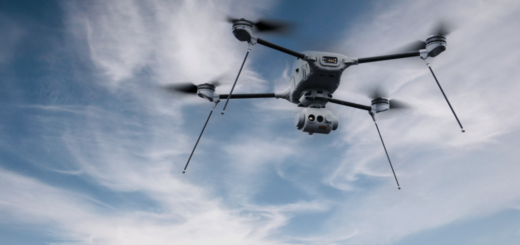Dutch C-390 Assembly in Brazil Advances Trilateral Airlift Program and Strengthens NATO Mobility
{loadposition bannertop}
{loadposition sidebarpub}
The Netherlands and Embraer have started structural assembly of the first Dutch C-390 Millennium in Brazil, part of a joint airlift program with Austria and Sweden. The milestone strengthens NATO’s tactical transport network and accelerates Europe’s move toward shared fleet capabilities.
On 12 November 2025, the Dutch Ministry of Defence and Embraer confirmed that structural assembly of the first Royal Netherlands Air and Space Force C-390 Millennium has begun in Gavião Peixoto, Brazil, marking a concrete milestone in the “Replacement of Tactical Airlift Capacity” program shared with Austria and Sweden, as reported by Dutch MoD and Embraer. The trilateral package now stands at 13 aircraft with seven additional options, aiming to renew medium airlift across three European fleets and tighten NATO interoperability. Initial Dutch and Austrian airframes are on the line, with the Netherlands procuring five aircraft and deliveries planned from 2027 after an earlier schedule adjustment. This step cements Europe’s growing shift toward a common C-390 solution for humanitarian support, medical evacuation and tactical logistics.
Follow Army Recognition on Google News at this link
The Embraer C‑390 Millennium is a modern multi‑role military airlifter designed for tactical transport, medical evacuation, humanitarian support, and rapid logistics operations (Picture Source: Army Recognition Group)
Embraer’s C-390 Millennium is a twin-jet, multi-mission airlifter designed for tactical and strategic roles, featuring a rear ramp, fly-by-wire controls and a self-protection suite compatible with NATO standards. It carries up to 26 tonnes at around Mach 0.80, enabling faster point-to-point movement of outsized loads than turboprop peers in the same class; roll-on/roll-off kits support aeromedical, airdrop, tanker (KC-390), firefighting and SAR missions with rapid reconfiguration. STOL performance and rough-field operations extend the aircraft’s utility from unprepared strips to major hubs, while digital avionics and cargo systems are optimized for precise airdrop and rapid turnaround.
In operational terms, the type has been fielded by Brazil since 2019 and has entered NATO service with Portugal and Hungary, where deliveries and trials have validated the aircraft’s multi-role profile, including intensive-care aeromedical configurations. European adoption has accelerated: Portugal received its second aircraft in June 2024 and expanded its order in 2025; Hungary accepted its first aircraft in April 2024. The Dutch production kickoff follows the July 2024 joint contract signature with Austria, which set deliveries from 2027 to 2030.
Against peers, the C-390’s “jet advantage” delivers payload and speed benefits over the Lockheed Martin C-130J, which typically carries about 19–20 tonnes and cruises slower; this compresses sortie time for many missions and can reduce aircraft hours for the same lift. Conversely, Airbus’s larger A400M offers greater payload (up to 37 tonnes) and volume and remains better suited for the heaviest or very bulky loads. The C-390 thus occupies a performance-cost niche between the C-130J and A400M: faster and with more payload than the former, smaller and potentially more economical than the latter, making it attractive for nations seeking high productivity without stepping up to the A400M’s scale.
Strategically, the Netherlands, Austria and Sweden are aligning procurement, training and sustainment under a coordinated C-390 framework to establish a shared European medium-airlift capability within NATO. The Netherlands’ COMMIT agency oversees the joint acquisition and national induction process, promoting standardization of mission kits such as aeromedical modules and harmonized maintenance support across partner fleets. This cooperative model strengthens surge capacity for disaster relief, medical evacuation and expeditionary logistics, while reinforcing transatlantic industrial links as Embraer expands its European defense presence. With deliveries phased from 2027 onward, the program enhances readiness for northern and eastern European operations, improves burden-sharing among allies, and complements heavier A400M assets by filling the medium-lift segment with faster, more agile aircraft.
The start of Dutch C-390 production turns a multiyear selection into tangible hardware and locks in a trilateral European medium-lift capability designed for speed, interoperability and surge relief operations. With funding lines in place, training infrastructure ordered and a synchronized delivery window from 2027, The Hague and its partners are translating procurement into practical air mobility that will matter in crises, within Europe and beyond.
Written by Teoman S. Nicanci – Defense Analyst, Army Recognition Group
Teoman S. Nicanci holds degrees in Political Science, Comparative and International Politics, and International Relations and Diplomacy from leading Belgian universities, with research focused on Russian strategic behavior, defense technology, and modern warfare. He is a defense analyst at Army Recognition, specializing in the global defense industry, military armament, and emerging defense technologies.

{loadposition bannertop}
{loadposition sidebarpub}
The Netherlands and Embraer have started structural assembly of the first Dutch C-390 Millennium in Brazil, part of a joint airlift program with Austria and Sweden. The milestone strengthens NATO’s tactical transport network and accelerates Europe’s move toward shared fleet capabilities.
On 12 November 2025, the Dutch Ministry of Defence and Embraer confirmed that structural assembly of the first Royal Netherlands Air and Space Force C-390 Millennium has begun in Gavião Peixoto, Brazil, marking a concrete milestone in the “Replacement of Tactical Airlift Capacity” program shared with Austria and Sweden, as reported by Dutch MoD and Embraer. The trilateral package now stands at 13 aircraft with seven additional options, aiming to renew medium airlift across three European fleets and tighten NATO interoperability. Initial Dutch and Austrian airframes are on the line, with the Netherlands procuring five aircraft and deliveries planned from 2027 after an earlier schedule adjustment. This step cements Europe’s growing shift toward a common C-390 solution for humanitarian support, medical evacuation and tactical logistics.
The Embraer C‑390 Millennium is a modern multi‑role military airlifter designed for tactical transport, medical evacuation, humanitarian support, and rapid logistics operations (Picture Source: Army Recognition Group)
Embraer’s C-390 Millennium is a twin-jet, multi-mission airlifter designed for tactical and strategic roles, featuring a rear ramp, fly-by-wire controls and a self-protection suite compatible with NATO standards. It carries up to 26 tonnes at around Mach 0.80, enabling faster point-to-point movement of outsized loads than turboprop peers in the same class; roll-on/roll-off kits support aeromedical, airdrop, tanker (KC-390), firefighting and SAR missions with rapid reconfiguration. STOL performance and rough-field operations extend the aircraft’s utility from unprepared strips to major hubs, while digital avionics and cargo systems are optimized for precise airdrop and rapid turnaround.
In operational terms, the type has been fielded by Brazil since 2019 and has entered NATO service with Portugal and Hungary, where deliveries and trials have validated the aircraft’s multi-role profile, including intensive-care aeromedical configurations. European adoption has accelerated: Portugal received its second aircraft in June 2024 and expanded its order in 2025; Hungary accepted its first aircraft in April 2024. The Dutch production kickoff follows the July 2024 joint contract signature with Austria, which set deliveries from 2027 to 2030.
Against peers, the C-390’s “jet advantage” delivers payload and speed benefits over the Lockheed Martin C-130J, which typically carries about 19–20 tonnes and cruises slower; this compresses sortie time for many missions and can reduce aircraft hours for the same lift. Conversely, Airbus’s larger A400M offers greater payload (up to 37 tonnes) and volume and remains better suited for the heaviest or very bulky loads. The C-390 thus occupies a performance-cost niche between the C-130J and A400M: faster and with more payload than the former, smaller and potentially more economical than the latter, making it attractive for nations seeking high productivity without stepping up to the A400M’s scale.
Strategically, the Netherlands, Austria and Sweden are aligning procurement, training and sustainment under a coordinated C-390 framework to establish a shared European medium-airlift capability within NATO. The Netherlands’ COMMIT agency oversees the joint acquisition and national induction process, promoting standardization of mission kits such as aeromedical modules and harmonized maintenance support across partner fleets. This cooperative model strengthens surge capacity for disaster relief, medical evacuation and expeditionary logistics, while reinforcing transatlantic industrial links as Embraer expands its European defense presence. With deliveries phased from 2027 onward, the program enhances readiness for northern and eastern European operations, improves burden-sharing among allies, and complements heavier A400M assets by filling the medium-lift segment with faster, more agile aircraft.
The start of Dutch C-390 production turns a multiyear selection into tangible hardware and locks in a trilateral European medium-lift capability designed for speed, interoperability and surge relief operations. With funding lines in place, training infrastructure ordered and a synchronized delivery window from 2027, The Hague and its partners are translating procurement into practical air mobility that will matter in crises, within Europe and beyond.
Written by Teoman S. Nicanci – Defense Analyst, Army Recognition Group
Teoman S. Nicanci holds degrees in Political Science, Comparative and International Politics, and International Relations and Diplomacy from leading Belgian universities, with research focused on Russian strategic behavior, defense technology, and modern warfare. He is a defense analyst at Army Recognition, specializing in the global defense industry, military armament, and emerging defense technologies.






